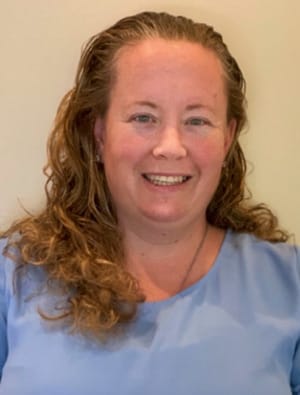Aktionswoche der Seelischen Gesundheit bei BEE Medic
Vom 10. bis 20. Oktober 2023 setzt sich die Aktionswoche der Seelischen Gesundheit unter dem Motto „Zusammen der Angst das Gewicht nehmen” mit dem Thema Ängste in Krisenzeiten auseinander. Das Aktionsbündnis Seelische Gesundheit verfolgt das Ziel, auf die unterschiedlichen Strategien zur Bewältigung und auf das vielfältige psychosoziale Hilfsangebot in Deutschland aufmerksam zu machen sowie mentale Erkrankungen zu entstigmatisieren.
Steigender Bedarf an psychologischer Unterstützung
Studien zeigen, dass psychische Erkrankungen, darunter auch Angststörungen, und demzufolge der Bedarf an psychologischer Unterstützung immer mehr ansteigt. Verstärkt wird dies durch Krisen, wie beispielsweise die Corona-Pandemie. So zeigt eine Studie der DAK (1), dass im Jahr 2022 ein Höchststand an Fehltagen aufgrund psychischer Erkrankungen, wie Depressionen, Anpassungs- und Belastungsstörungen, chronische Erschöpfung oder Angststörung, zu verzeichnen ist. Eine weitere Studie der Krankenkasse (2) zeigt einen deutlichen Anstieg von Angststörungen und Depressionen bei Jugendlichen während bzw. nach der Pandemie. Demzufolge sei die Prävalenz von Angststörungen bei Jugendlichen im Jahr 2021, im Vergleich zum Jahr 2019, um ca. 59% gestiegen. Weiterhin wurden 25% mehr Jugendliche verzeichnet, welcher mit depressiven Episoden versorgt wurden.
Generell brauchten während der Corona-Pandemie mehr Menschen psychologische Hilfe. So stellten beispielsweise 82% der Ärzt:innen bei ihren Patient:innen häufiger Probleme mit Angststörungen fest. Etwa 80% der Ärzt:innen diagnostizieren Depressionen häufiger als vor der Corona-Pandemie. Ebenfalls sind die psychosomatischen Beschwerden angestiegen, wie bspw. Müdigkeit, Erschöpfung oder Schmerzen ohne organische Ursache (3). Parallel zu dieser Entwicklung resultieren auf der Seite der Therapeut:innen lange Wartelisten sowie mentale Belastungen durch den vermehrten Stress für die Therapeut:innen.
Woche der Seelischen Gesundheit bei BEE Medic
Dem Ziel, auf die unterschiedlichen Strategien zur Bewältigung und auf das vielfältige psychosoziale Hilfsangebot in Deutschland aufmerksam zu machen, schließen wir uns daher gerne an und möchten Neurofeedback als Therapiebaustein für mentale Krankheiten vorstellen.
Neurofeedback kann ein additiver Therapiebaustein sein, der sich für ein breites Patient:innen-Klientel und eine Vielzahl an Indikationen eignet. Durch die häufig schnellen Behandlungsdurchbrüche motiviert Neurofeedback dabei sowohl die Patient:innen als auch die Therapeut:innen und die Wartelisten können verringert werden. Gleichzeitig bringt Neurofeedback Leichtigkeit in den Therapiealltag und kann auch die psychische Gesundheit der Therapeut:innen selbst fördern.
In unserem Expertentalk mit Dr. rer. nat. Meike Wiedemann am 11. Oktober sprechen wir daher über Neurofeedback und Angststörungen. Dabei werden wir über die Entwicklung und die Rolle von Angst(störungen) in der Therapie sprechen und wie Neurofeedback dabei helfen kann. Unsere Expertin gibt dabei auch spannende Einblicke in Ihren Praxisalltag und Ihre langjährige Erfahrung mit Neurofeedback.
Das Webinar eignet sich auch für Personen, welche keine Vorkenntnisse über Neurofeedback besitzen. Zu Beginn erhalten Sie eine kurze Einführung zur Funktionsweise und den Grundlagen von Neurofeedback.
Hier gelangen Sie zu unserem kostenlosen Webinar am 11.10.2023.






